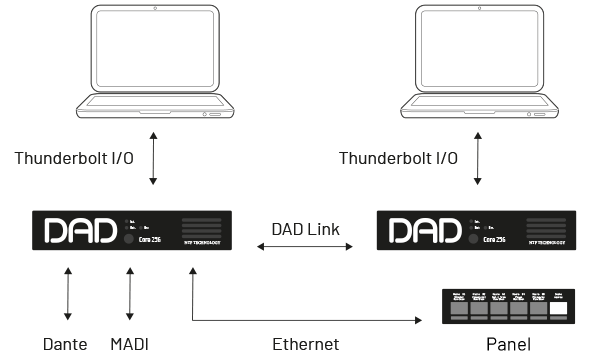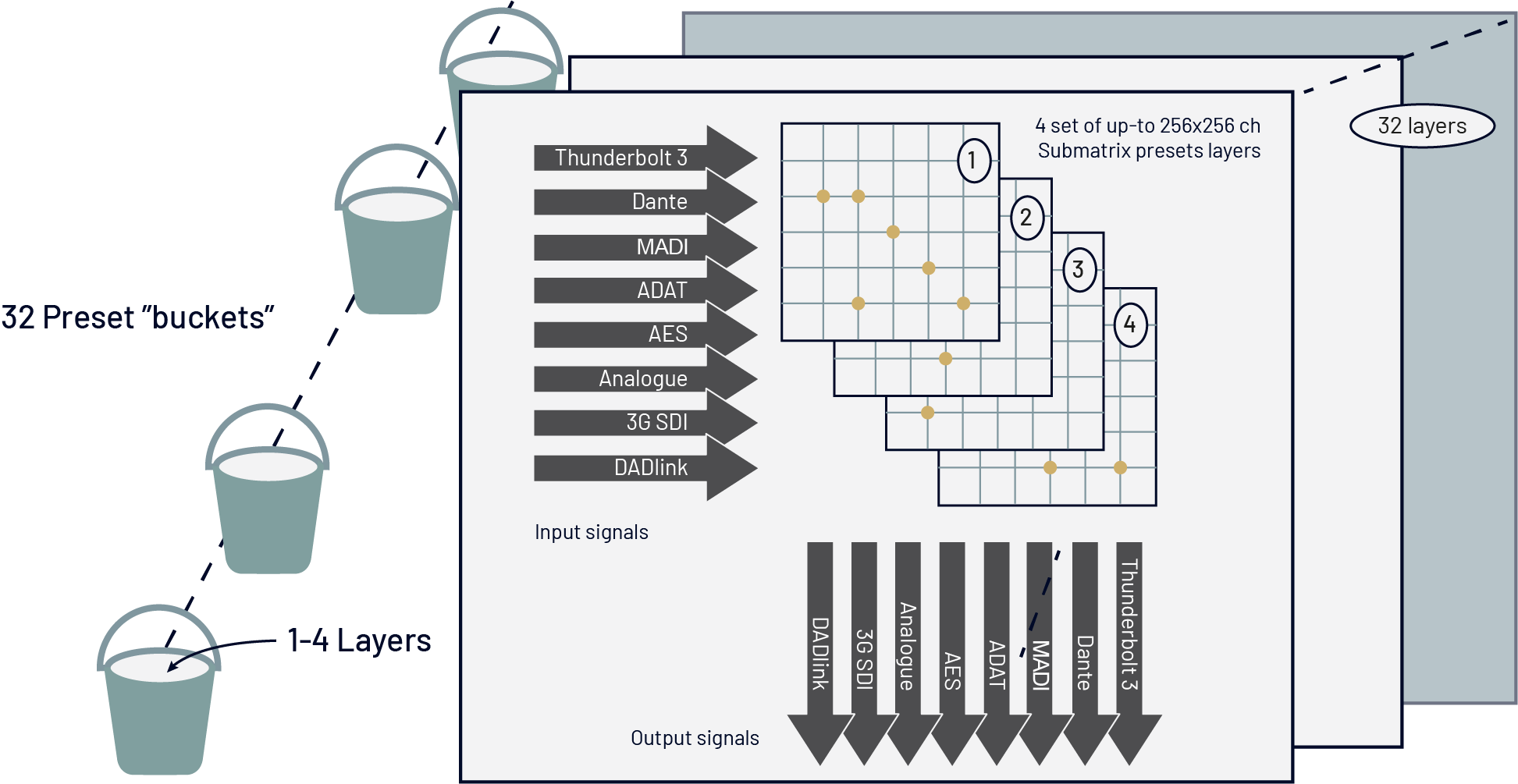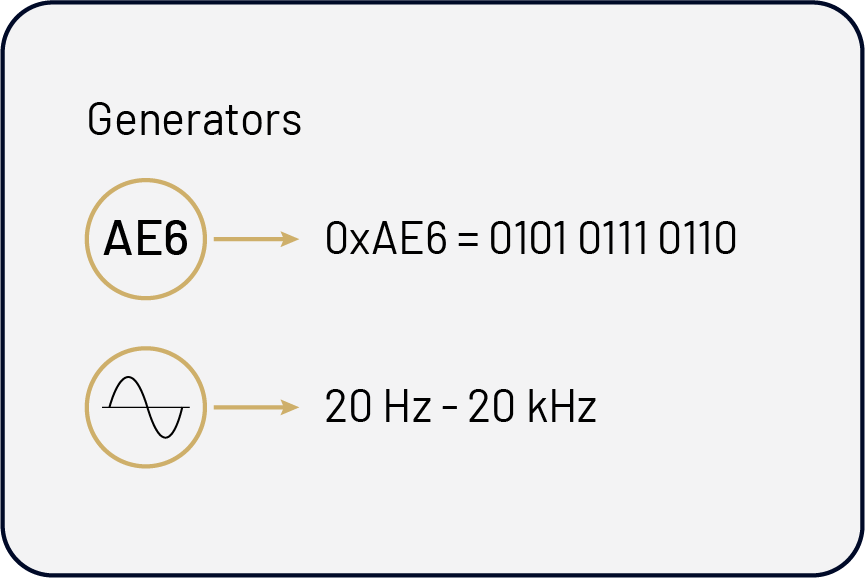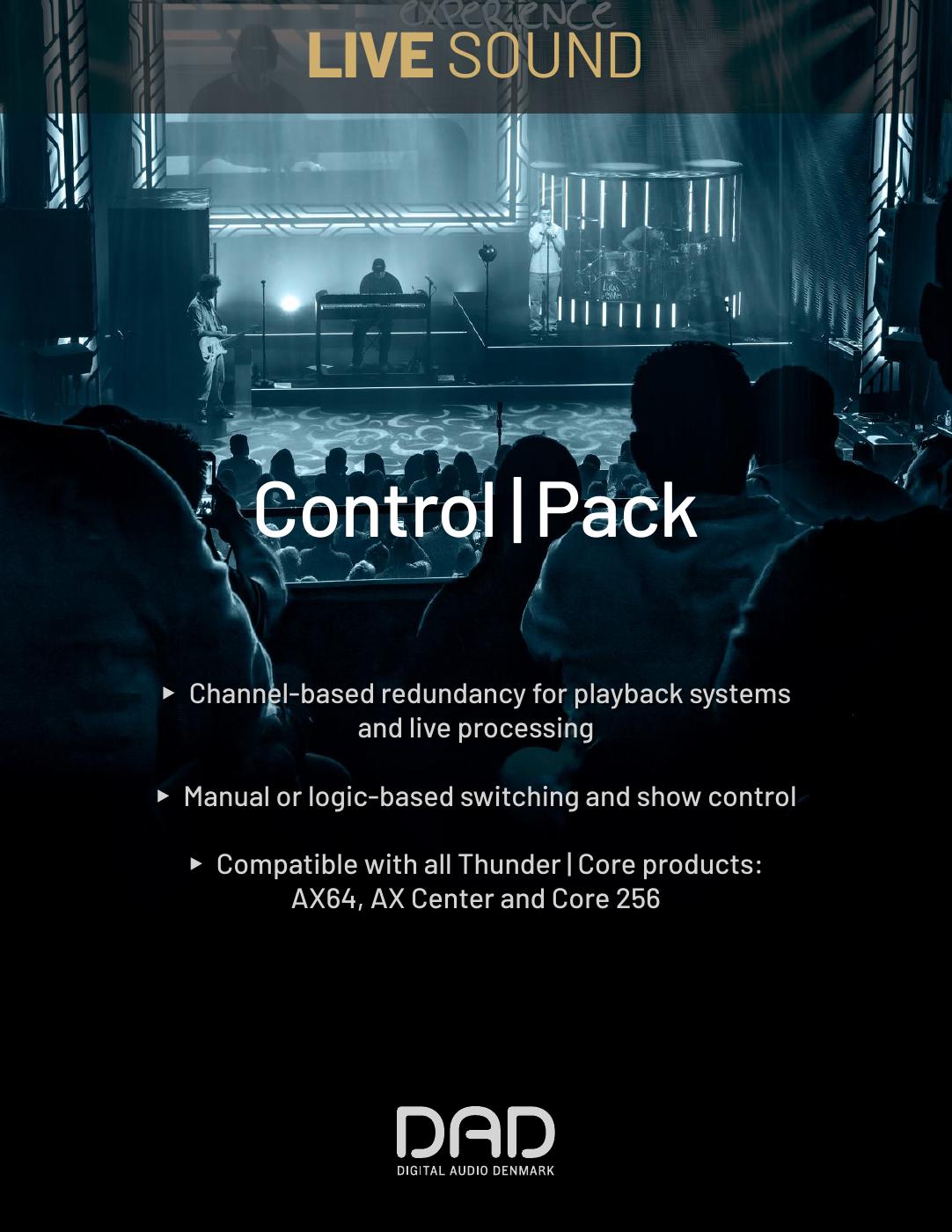
Playback Redundancy and Show Control
DADman and Firmware functionality for Thunder | Core products
Channel-based redundancy for playback systems and live processing with manual or logic-based switching and show control.
Control | Pack is a DADman and Firmware upgrade that provides native switching between any set of sources to output destinations, providing fast and automated redundancy in playback live processing applications, as well a manual switching of routing preset for show control applications when using Thunder | Core products: AX64, AX Center and Core 256.
There are a variety of use cases for the Control | Pack functionality.
- Redundant playback computer back track interface system
- Effects processing / Inserts on native systems
- Playback of computer VST instruments /effects
- Show control / scene change management
- Backup of source selection e.g. microphones
The DAD Thunder | Core products – AX64, AX Center and Core 256 – have a very comprehensive, flexible, and versatile I/O and routing structure. They are highly capable Thunderbolt 3 interfaces for macOS and Windows computers with only 9 samples latency and a high channel count of 256 bidirectional channels at 96 kHz, as well as compatible with our DADlink near-zero latency connectivity between Thunder | Core interfaces.

Depending on the need for I/O capacity, AX64, AX Center or Core 256 interfaces can address applications in live music audio systems related to playback or insert of audio on computers for back-tracks and native effects processors.
Further, the routing capabilities can enable functionalities related to backup source switching and show control with instant reconfiguration of the audio path and signal flow in live music audio systems.
Preset Buckets and Layers
The routing presets – also referred to as ‘buckets’ – are configured via DADman and natively loaded into the unit.
A total of 32 independent buckets can be configured with 4 layers of up to 256 x 256 channels each. The channel configuration can route channels from any of the available I/O interfaces to any destination instantly. The number of channels is independent of the sample rate.
A bucket is configured with one set of output channels and with 4 layers of input channels. Each layer can have any combination of inputs enabling different sources to be switched to the designated outputs when the layer is changed.


Switching
Switching of input layers in a preset ‘bucket’ can be done via signal triggers natively in the Thunder | Core interface, manually from DADman or via external control devices.
Automated switching can be done based on a signal integrity-based trigger information from the configured signal detectors that is available on all input channels in a Thunder | Core unit. The detector and trigger configuration is handled in DADman but works 100% standalone.
The triggers enable switching between layers in a preset bucket where a major application is to switch between computers playing back tracks or computers providing native effect inserts.
Signal Detection
Each of all the available input to the Thunder | Core unit has a signal detection system for both the AE6 and pilot tone signal which can determine integrity of a test signal if this has been allocated to this channel. This detection is in addition to the signal peak meters which shows the signal level in DADman
Signal detection on channels can be pilot tone triggers or an AE6 digital trigger. Furthermore, signal detection can also be done on port level for MADI and AES3. The built-in signal generators for pilot tone and AE6 signals are generally available as sources in the system and can be freely routed to any of one or more outputs.
The switch time for a preset ‘bucket’ is less than 2 audio samples with AE6 -based switching providing a near-inaudible transition and around 1ms for pilot tone detection. The response time for signal detection/triggers and switching is less than 1ms. When switching manually via DADman or an external control panel the switch time is zero audio samples.
AE6 and Sine Wave Signal Generators
Two signal generators are available as fully assignable trigger sources into the complete routing matrix of a Thunder | Core product. Each of the signal generators can be routed to one or more outputs of a unit. There is a digital generator named AE6 and a pilot tone generator providing a sine wave signal that can be set to any frequency between 20 Hz and 20 kHz with a level between -60 dB and 0 dB.
The AE6 signal is a signal with digital sequence which is the same in all samples of the signal generated. This enables the AE6 detector to determine if the signal is correct within one single sample. The AE6 signal appears as just another audio signal and can be transferred via all the digital interfaces of a Thunder | Core unit.

AE6 can not be transferred via an analogue interface or via a sample-rate converter without being corrupted. The pilot tone signal can be transferred on all analog and digital interfaces also via a sample rate converter. However, the detection time of a pilot tone is higher than for AE6.
Experience Control | Pack at AES 2024

Booth 529
If you attend the AES Show in NYC 8-10 Oct 2024, join us at Booth 529 for a hands-on demo and a deep-dive into the world of Control | Pack for Thunder | Core products!

